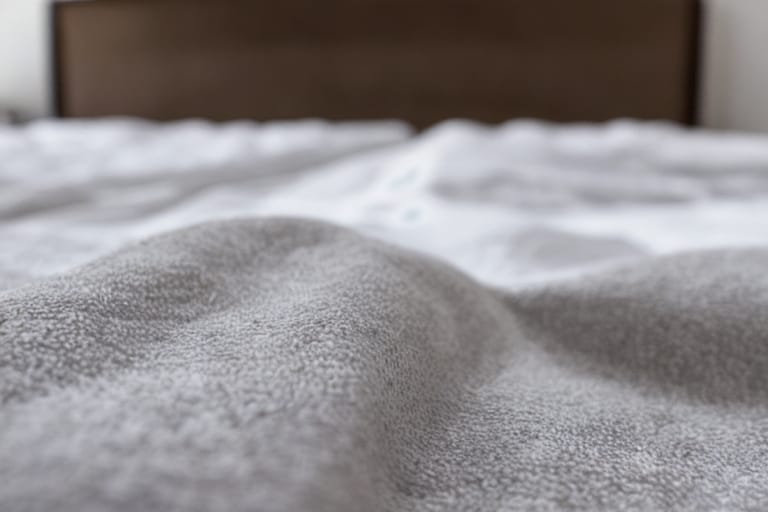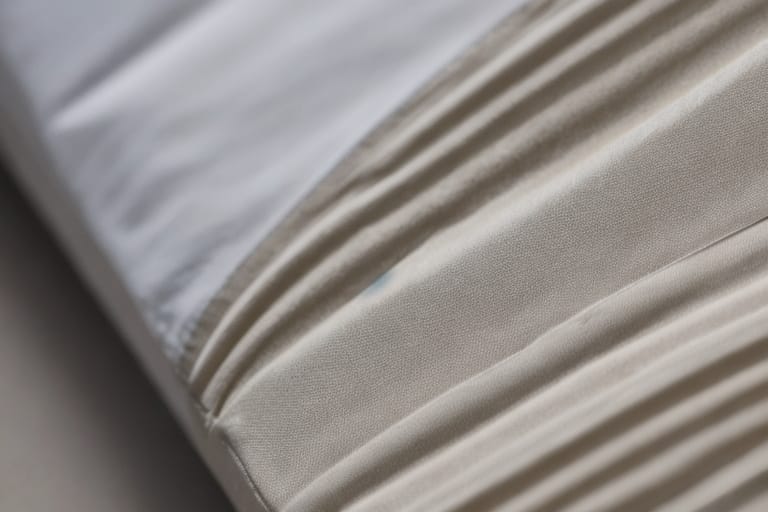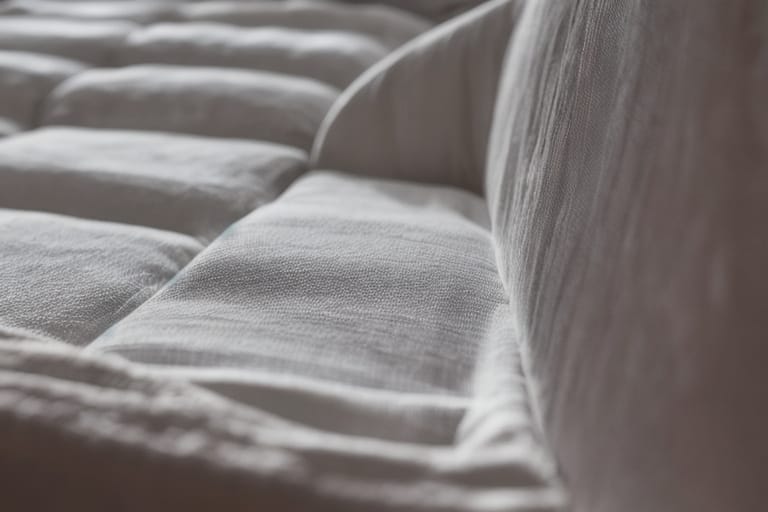Have you ever purchased a wonderfully fluffy down comforter, only to find it flat and lackluster after a few months of use? You’re not alone. The frustrating reality is that even high-quality down comforters tend to lose their loft over time.
But why does this happen, and is there anything you can do about it? This beginner’s guide will walk you through the ins and outs of down comforter flatness. Read on to finally understand the reasons behind deflated down, and how to pick one that will stand the test of time.
What Causes a Down Comforter to Go Flat?
Before diving into solutions, it’s important to understand the root causes of flatness in down comforters:
- Compression over time – The weight of your body compresses the down and synthetic fills during sleep. After months or years of compression night after night, the fills can lose their ability to fully re-loft.
- Improper care – Failing to follow cleaning guidelines and improper storage can cause the fill to clump or break down. This prevents the comforter from properly re-lofting when put back on the bed.
- Low fill power or fill weight – Comforters filled with less fill power and overall less fill weight tend to be more prone to becoming flat quickly.
- Poor construction quality – Lackluster construction with little compartmentalization allows the fill to shift around easily over time, accelerating loss of loft.
Understanding these key factors will help you shop smarter moving forward. Keep reading for tips on picking a down comforter built to fight flatness.
Fill Power and Fill Weight Impact on Flatness
When evaluating down comforters, you’ll see two key specifications related to the filling:
- Fill power – The volume “an ounce of the down occupies in cubic inches.” Higher fill powers correlate to increased warmth and longevity.
- Fill weight – The total weight of the down fill inside a comforter, typically measured in ounces. More fill = more warmth, comfort, and durability.
How do these factors impact loft and flatness issues over time?
Fill Power
| Fill Power | Quality & Longevity |
|---|---|
| Under 500 | Low. Quickly loses loftness. |
| 500 – 599 | Decent. Retains shape reasonably well over 2 years. |
| 600 – 699 | Good. Maintains shape for 3+ years if cared for. |
| 700 – 799 | Great. Excellent loft retention for 5+ years. |
| 800 and above | Superior. Maximum loft and shape retention. |
Bottom line – For a down comforter that maintains optimal thickness year after year, opt for a fill power over 600. High-end options with ratings around 800 will essentially look like new for a decade or longer.
Fill Weight
More ounces of fill also provide extra loft cushioning that stands up to compression over time. Here are the typical weight ranges to consider:
- Comforter Weight Under 35 ounces – Too little fill, prone to quick flattening
- Good Comforter Weight 36 – 57 ounces
- Optimal Comforter Weight Over 58 ounces – Less prone to degradation of loft
The combination of higher fill weight + higher fill power gives you the most durable, resilient down comforter possible. While cost goes up with increased ounces and fill power, the long-term comfort & longevity is well worth it.
Construction Design Elements
Beyond fill specifications, the overall construction and fabric design play a key role in maintaining shape and thickness year after year:
Baffle Boxes
Baffle box design involves sewing fabric dividers at regular intervals to create “boxes” that keep the fill evenly distributed without shifting. This provides excellent prevention against thinning corners or “spines” when the fill moves.
Sewn-Through Boxes
The less effective sewn-through technique simply attaches the comforter’s top and bottom layers with long threads from head to toe without internal fabric walls. While cheaper, nothing stops the fill from shifting out of place over time.
Stick with reputable brands offering baffle box construction for optimal durability and maintaining even thickness across the comforter’s surface over years of use.

Caring Correctly for a Down Comforter
Improper washing, drying, and storage can all permanently damage down clusters leading to inadequate re-lofting and increased blanket flatness over time. Here are expert-recommend care guidelines:
- Only wash when truly necessary – spot treat stains when possible
- Use a large commercial washer on delicate cycle with mild detergent
- Never wash with regular detergent or bleach products
- For drying use low heat or air fluff setting only
- Store completely dry using breathable cotton cases
- Fluff gently and massage any stubborn flat spots
Commit these proper maintenance practices to memory and your comforter will deliver reliable, cloud-like coziness for years rather than months!
Top-Rated Down Comforters Built to Resist Flattening
Now that you know what to look for, here are two excellent down comforters delivering the warmth, comfort, and durability beginners should seek out:
1. Rocky Mountain Feather Bed Down Comforter
- Fill Power: 900 (ultra-high quality)
- Fill Weight: 63 oz (heavy & durable)
- Construction: Baffle box
- Price Range: $$
Made right in the USA, Rocky Mountain utilizes premium European white down encapsulated between resilient baffle boxes that prevent shifting. This exceptional loft and longevity does cost a pretty penny – but will likely be the last comforter you every buy.
2. Buffalo Check Cotton Down Comforter
- Fill Power: 600 (decent quality)
- Fill Weight: 50 oz (good durability)
- Construction: Baffle box
- Price Range: $$
For those seeking quality on a budget, this mid-range Buffalo Check comforter offers great bang for your buck. 600 fill power and baffle box construction strikes the sweet spot between cost and reliability – resisting flatness for years of cozy comfort!

Frequency asked Questions
Still have some lingering questions? Here are answers to the most frequently asked questions from down comforter beginners:
1. Why does higher fill power resist flattening better?
Higher fill power down clusters have greater resilience – meaning they push back and re-fluff more effectively against compression. This results in enhanced ability to re-loft fully night after sleepless night.
2. Does proper storage help maintain loft?
Yes! Always store fully dried down comforters in breathable cotton cases. Avoid plastic bags or other materials that prevent airflow and allow moisture buildup – this can degrade down clusters over time.
3. How long should my comforter last?
With proper care and medium+ fill power, expect reliable comfort from a quality down comforter for 5-10 years. Budget options may only last 2-3 years before significant flatness. High-end 800+ fill power comforters can look fluffy and new for over a decade if well maintained!
4. Is down or alternative fill better for maintaining thickness?
While cheaper, alternatives like polyester cannot match the luxury feel and longevity of natural goose or duck down. Avoid “cheap knock-offs” filled with chopped, low-grade feathers. Nothing beats large-cluster premium down for loft over the long haul!
5. Does the size I choose affect potential flat spots?
It sure can! Dimensions too small leave comforters vulnerable to compressed edges causing permanent flatness along the sides. Consult size charts and opt for a comforter about 2 inches longer and wider than the top of your mattress for optimal draping without tight spots.
6. How often should I have my down comforter professionally cleaned?
Every 2-3 years is ideal – or whenever you notice stubborn staining/soiling. This deep cleaning fully restores loftiness compared to sporadic home washing. Be sure to select a certified down-specific dry cleaning expert for the best results.
7. Can I fix existing flat spots at home?
Try hanging the comforter outdoors and gently massaging or fluffing indented areas. A round in the dryer with clean tennis balls can also help re-distribute filling. Avoid overly aggressive working of spots, as this can damage the baffle-box walls. Consider professional cleaning for stubborn degradation requiring serious re-lofting.








